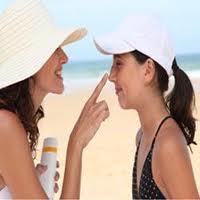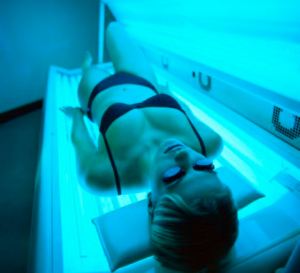How Your Medications or Medical Condition Could Be Making You More Sun Sensitive

What exactly is photosensitivity, and how do you protect yourself from it?
Photosensitivity is an abnormal increase in the skin’s sensitivity to sun exposure brought on by certain medical conditions, medications, and skincare products and treatments. According to the Skin Cancer Foundation if you are photosensitive your skin can have a few different reactions:
A person who is photosensitive may experience some form of dermatitis, a skin rash caused by an allergy to or physical contact with a particular substance, in this case UVR. The face, outer arms, and upper chest are the most common areas for a rash due to photosensitivity.
The reaction may be either photoallergic or (more commonly) phototoxic, often in response to a specific medication. A phototoxic reaction typically shows up as an exaggerated sunburn, usually occurring within 24 hours of sun exposure. Photoallergic reactions, however, do not occur until one to three days after the substance has come into contact with the body, since they require activation of the immune system to mount the response. Photoallergy, like other allergies, tends to occur in previously sensitized individuals; repeat exposure to the same allergen plus UVR exposure can prompt a typical pruritic (itching) and eczematous reaction (red bumps, scaling, and oozing lesions, as in eczema).
There are more than a few medical conditions that can cause photosensitivity. They include but are not limited to: lupus, dermatomyositis, actinic prurigo, chronic actinic dermatitis, polymorphous light eruption, solar urticaria, and xeroderma pigmentosum. (For more information on each of these diseases and how they cause photosensitivity see the article Photosensitivity – A Reason To Be Even Safer in the Sun on the Skin Cancer Foundation website.) If you happen to have one of these disorders or know someone who does be sure to check with your doctor on how to properly protect your skin from sun exposure.
Furthermore, many medications can cause photosensitivity. According to Dr. Ellen Marmur in her book Simple Skin Beauty (pages 146-147):
Be sure to check with your pharmacist or doctor about what sun-related side effects your medications could give you. Antibiotics such as tetracycline and sulfamethoxazole (Bactrim), some diuretics and antihistamines (such as Benadryl), nonsteroidal anti-inflammatory drugs (Feldene, Naproxen, Motrin), and some antidepressants can be phototoxic after exposure to UV light. Researchers have found that taking these drugs also increases the risk of skin cancer if you are exposed to the sun.
For a very comprehensive list of medications that can cause photosensitivity see the chart in the Skin Cancer Foundation article Photosensitivity – A Reason To Be Even Safer in the Sun.
But before you despair if you have a medical condition or take a medication that causes photosensitivity keep a few things in mind. Once again I’ll quote the Skin Cancer Foundation article:
Since many of the medications are vital in maintaining or restoring health and quality of life, it is important not to “throw out the baby with the bath water.” Rather than eliminating these treatments, some combination of sun avoidance and sun protection is the preferred strategy to prevent the unwanted effects of photosensitivity. By seeking shade and staying out of direct sunlight between 10 AM and 4 PM (generally the sun’s most intense hours); employing high-SPF broad spectrum sunscreens (SPF 30 or higher is advisable for photosensitive individuals); and wearing sun-protective clothing, including wide-brimmed hats and UV-blocking sunglasses, patients can continue to reap the benefits of these medications while avoiding sun damage.
Skincare Treatments and Products That Can Cause Photosensitivity
Since skincare treatments like chemical peels and microdermabrasion that cause photosensitivity are done by choice and not a health necessity you have a lot of control over when to them and how to protect your skin afterwards. Both chemical peels and microdermabrasion remove the layers of dead skin cells on the epidermis (the top layer of the skin) which then causes sun sensitivity. So it is advisable not to have a chemical peel or a microdermabrasion treatment done right before a tropical vacation or an outdoor adventure. After either of those treatments be very careful to consistently reapply your sunscreen every 3 hours or so if you are outside or even if you are just sitting by a window in your office or driving around in your car. If you get too much sun exposure following one of these treatments you could erase all the positive effects of the treatments.
As for skincare products like Retin-A that increase sun sensitivity be sure to apply them at night in order to get all the positive effects of the products without the sun sensitivity side effect. Furthermore, according to Dr. Marmur:
Retinoids such as Retin-A, any AHA, even facial scrubs – anything that exfoliates the top layers of your skin – will make you more vulnerable to the elements. You should probably stop using any of them one week before going on a beach vacation. If the stratum corneum doesn’t have that dead keratinocyte barrier on top of it, you’re setting the skin up for irritation by salt water, chlorine, wind, and most of all the sun.
So be sure to error on the side of caution and speak to your doctor about this issue when receiving a prescription for any new medication. And be smart about your timing for any skincare treatments that cause sun sensitivity.













Recent Comments